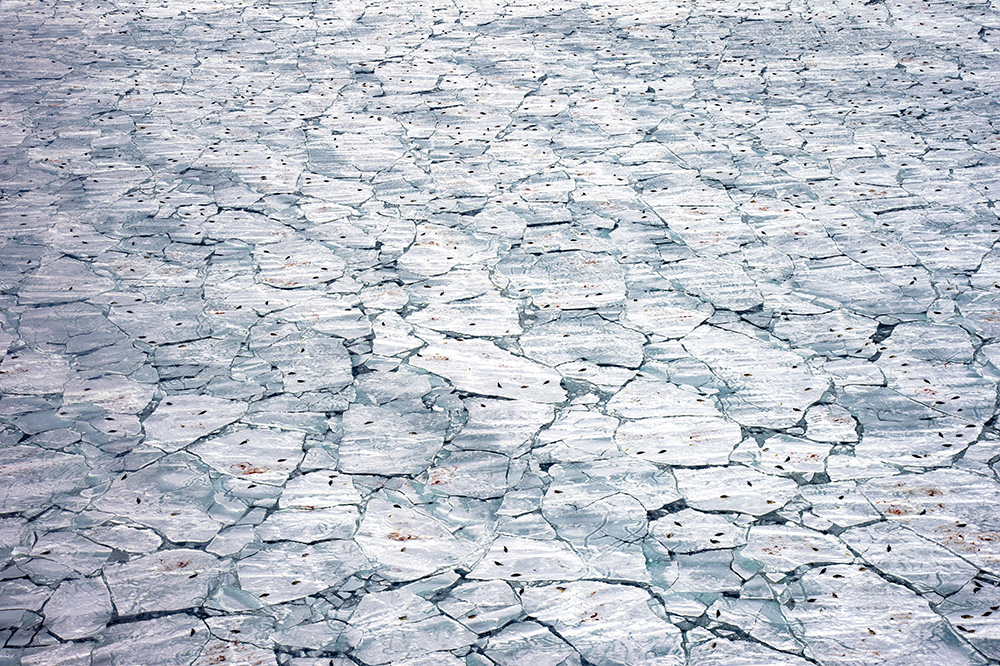Blood paints the ice as the 2020 harp seal herd gives birth on unstable fractured sea ice in the Gulf of St. Lawrence, Quebec, Canada. Harp seals migrate down from Arctic waters in the fall and enter the Gulf of St. Lawrence waiting for sea ice to form
Blood paints the ice as the 2020 harp seal herd gives birth on unstable fractured sea ice in the Gulf of St. Lawrence, Quebec, Canada. Harp seals migrate down from Arctic waters in the fall and enter the Gulf of St. Lawrence waiting for sea ice to form. The herd of harp seal females hauls out and give birth in late February. A storm demolished the early sea ice that formed in late January and early February. Concentrated by wind, wave and current, the fragments came together to form an unstable patchwork of ice. The herd discovered this fragile ice and selected this platform as their only nursery option in the Gulf. The loosely connected sea ice began to disinetgrate and break up early causing another year of high pup mortality. Harp seals pups are a extraordinarily beautiful creature facing the ugly and brutal truth of climate change. As tempertures in the Gulf of St. Lawrence rise the sea ice decreases or fails to form at all causing catastrophic loss of some year classes.
Foto 8 di 11

 Abbonati
Abbonati I nostri manuali
I nostri manuali LOGIN/REGISTRATI
LOGIN/REGISTRATI




